At the beginning of year, mainly between 1st to 3rd on January, many Japanese visit shrine to pray for happy life in the year. This custom is called as “Hatsumoude”.
Shizuoka prefecture has many shrines popular with people. Some of them are special shrines which related to Shizuoka tea industry.
Today I’d like to introduce the shrines having relationship with Shizuoka tea.
(1) Akiha Shrine
Akiha Shrine is located on the top of Mt. Akiha, standing 866m above sea level. This high altitude provide us with wonderful landscapes from the mountain to Enshunada Sea.
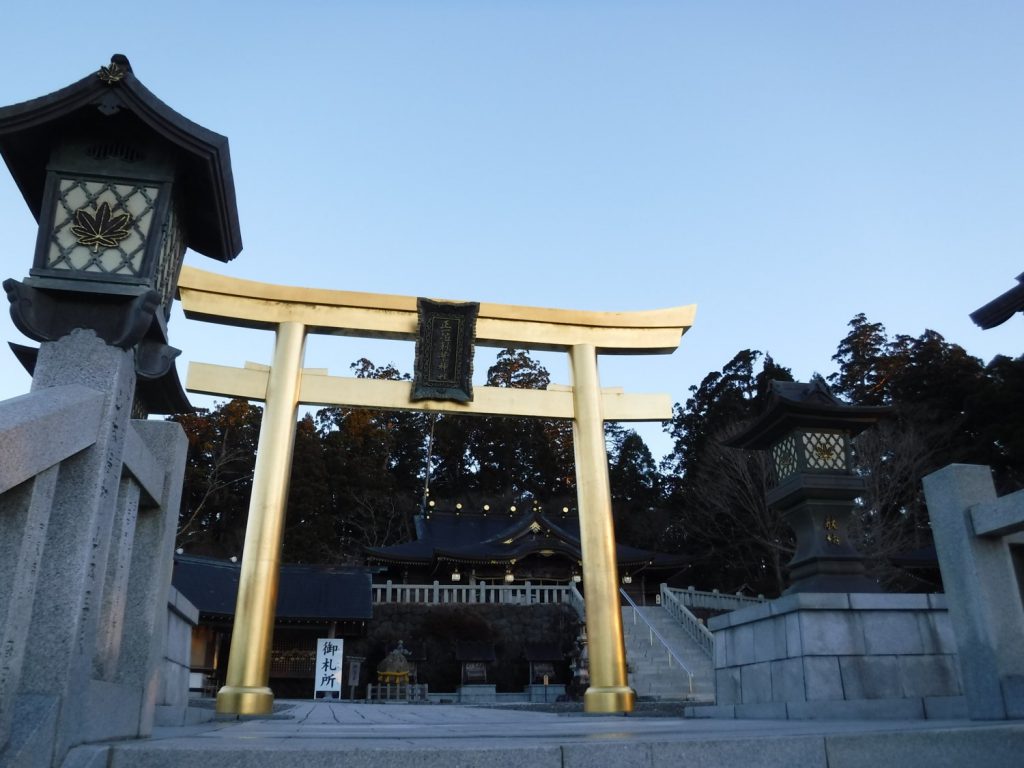
The gold gate is called as “Kofuku no Torii”, which means literally “Shrine gate of happiness”.

The landscape from the shrine to Enshu-nada sea over the Tenryu tea estate.
In addition to the great landscapes, the cold condition due to the high altitude is perfect to the reservation and maturation of Japanese Sencha. Some tea farmers carefully sealed their excellent crude tea into the wood box and ceramic pot, and reserved the box and pot in the worship hall of Akiha Shrine on June.

The worship hall of Akiha Shrine. Tea farmers in Tenryu tea estate store their tea for maturation from the beginning of summer to the end of autumn.
After the 6 months’ maturation, they opened the box and pot, and then they roasted the crude tea using the sacred fire of Akiha Shrine. Akiha Shrine is believed to have a divine favor of fire control, because the shrine deifies a god of fire “Hinokagutsuchi-no-Okami”. Tea farmers use the sacred fire of Akiha Shrine with wishing the divine favor could improve the flavor of their tea more.
The matured teas will be sold on 3rd January at the “Hatsuuri” event held by the association of tea businesses in Hamamatsu city.
< Event Information >
- Event Name : New-Year’s First Sale of Tea
- Date : 10:00 – 15:00 on 3rd, January, 2019.
- Venue : Soramo Hamamatsu
- Access : It takes approx. 1 minute on foot from the north gate of JR Hamamatsu Station. The venue can be found in the left hand from the north gate.
(2) Kunozan Toshogu Shrine
Kunozan Toshogu enshrines Ieyasu TOKUGAWA, the first Shogun in Edo period. The tomb of Ieyasu TOKUGAWA lays on the backyard of the worship hall.

The shrine is located on the top of Mt. Kunozan.
In Edo period, tea farmers in Honyama tea estate had kept to offer their high grade teas after approx. 6 months’ maturation in the storage house on the mountainside “Dainichi Toge” where lays on approx. 1200m altitude from sea level. The tea farmers had offer the matured tea to Shogun Tokugawa living in Suruga Castle annually in Aumtumn. They had carried the tea jar reserving teas for maturation from the mountainside to Suruga Castle. This custom delivering the matured tea to Sunpu Castle was called as “Ochatsubo Dochu”.
More than 30 years ago, the association of tea farmers and tea merchants in Shizuoka city had reenacted the “Ochatsubo Dochu” and this re-arranged custom has been performed annually. Every year tea masters reserve the finest teas in a tea jar so-called “Chatsubo” and seal them using “Washi” paper strictly, then put them on the storage house on Dainichi Toge mountain pass in Ikawa region, the north part of Shizuoka city. Now we can see the “Ochatsubo Dochu” to Sunpu Castle.
After the “Ochatsubo Dochu”, the tea jar “Chatsubo” is opened in the worship hall of Kunozan Toshogu Shrine at the end of Autumn in order to offer the ceremony so-called “Kuchikiri no Gi” for the tomb of Shogun Tokugawa.
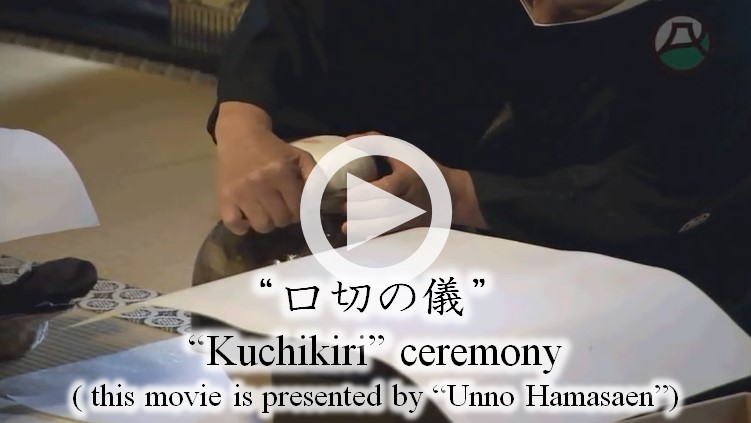
The movie made by Unno Hamasaen introduces a series of ceremony for Sencha maturation, including storing Sencha in “Chatsubo” tea jar, sealing the “Chatsubo”, storing them in a warehouse at 1067m altitude on Akaishi Mountains, taking them from the warehouse to Toshogu temple and cutting the seal in “Kuchikiri” ceremony.
Kunozan Toshogu also has great landscapes of Suruga Bay.
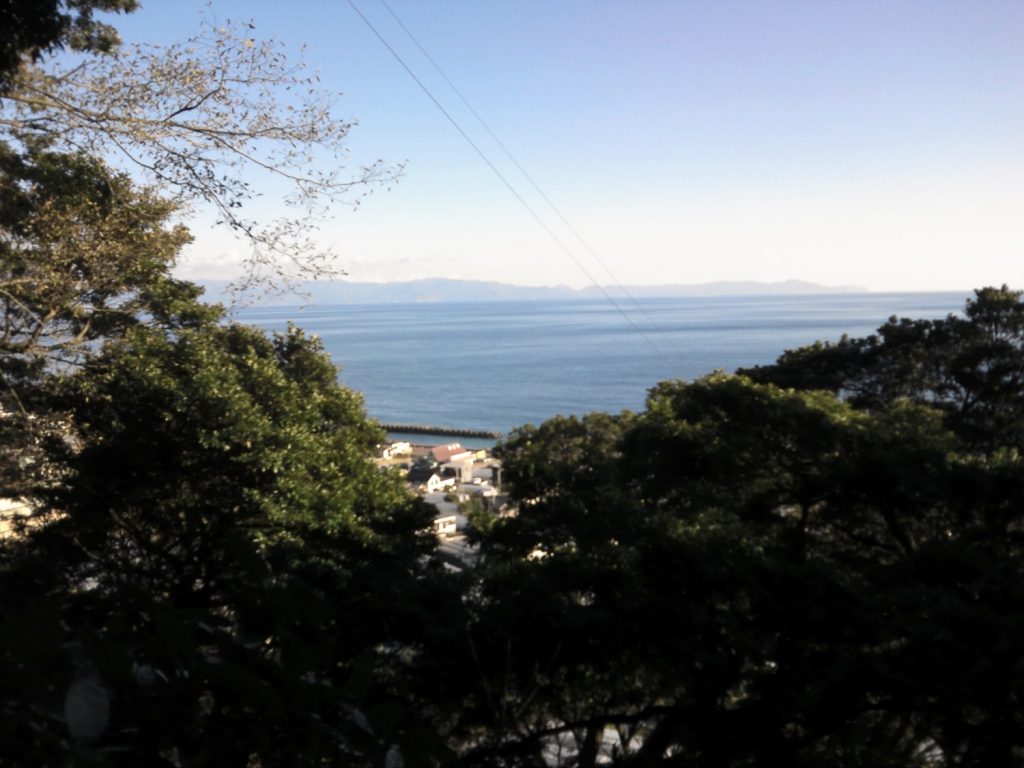
Izu Peninsula beyond Suruga Bay viewed from Kunozan Toshogu.

The landscape to the direction to Yaizu Port viewed from Kunozan Toshogu.
(3) Oguni Shrine
Oguri Shrine, located on Mori tea estate, has established since A.D. 555. The shrine deifies Daikoku-sama (sometimes called as Ookuninushi), who has divine favors contributing agriculture, forestry, mining, marriage and pharmacy.
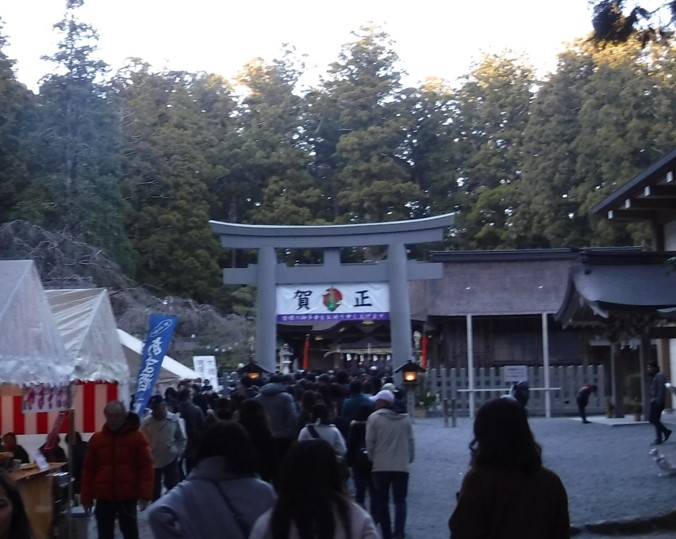
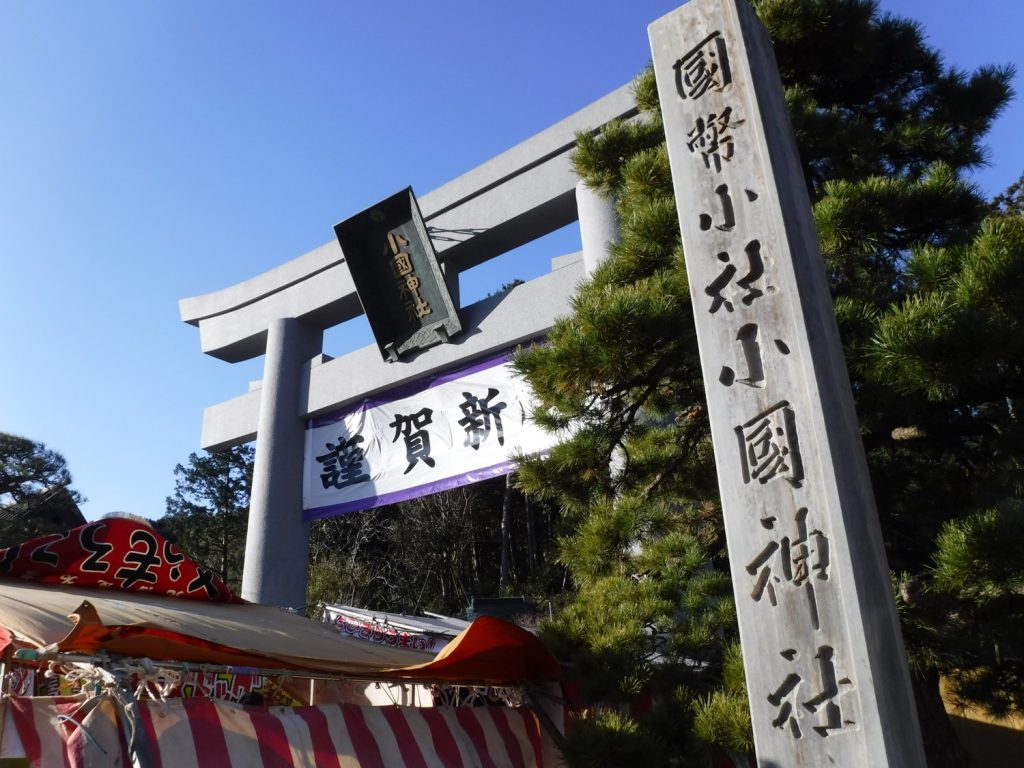
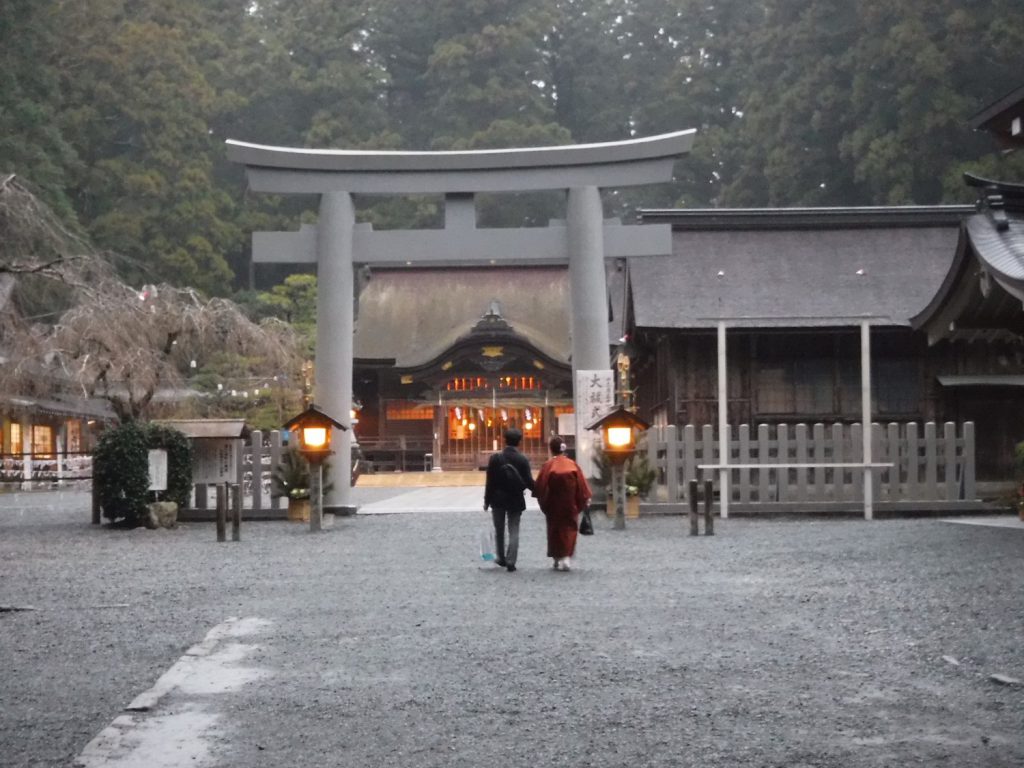
Oguni Shrine has fancy shops for visitors, including tea shop. The area of shops is called as “Kotomachi Yokocho”.

Kotomachi Yokocho has varisou shops for visitors. We can enjoy specialty teas produced in Mori tea estate, various confections and foods, buying souvenirs.
Historically various shops have sold foods and teas for visitors. Especially in the past time when it took more than a half day to visit the shrine, shops along the road to shrine had an important role to provide the visitors with foods and beverages.
Suzuki Choju Shoten has opened the retail shop in the Kotomachi Yokocho next to the shrine. The tea shop is very fancy and deals with a wide variety of specialty teas from single estate production to originally blended teas.
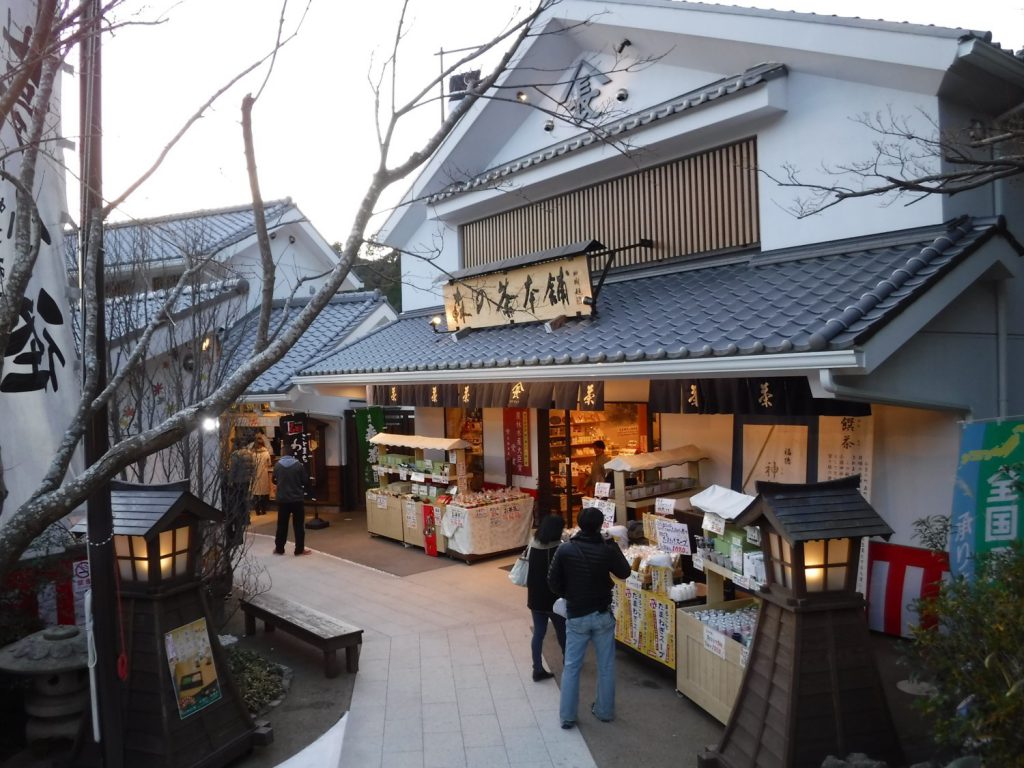
These shrines are perfect to “Hatsumode”. Actually these shrines are full of visitor at the beginning of every years. For those who would like to avoid traffic jam, it is recommended to visit after 2nd January.
In my opinion, the best season for sightseeing in these shrine is the end of autumn because they has wonderful views of colorful autumn leaves inside.
